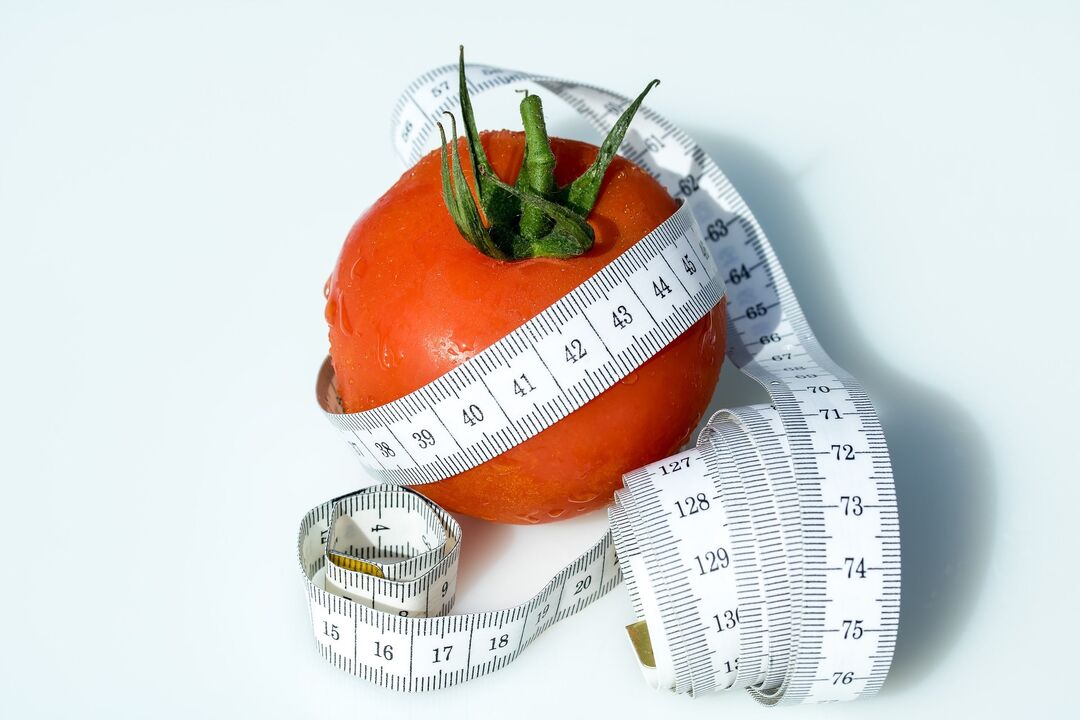
The history of food
- O or I – first;
- A (II) – second;
- B (III) – third;
- AB (IV) – Fourth.
The most common blood types worldwide are blood group 1 and blood group 2. Its carriers account for 80% of all humans. The third type is less common, occurring in 15%, and the fourth type is considered the rarest, accounting for only 5%.
Basic principles and rules
- In every period of human evolution, there are certain eating habits. When it changes, the blood will mutate and new groups will appear. Therefore, each group has a basic set of products.
- To stay healthy, you need to eat the way your ancestors' specific blood type ate. Because of the biochemical link between blood and food, the "right" foods are better absorbed, digested faster, increase metabolism, and strengthen the immune system.
- If you eliminate the "wrong" foods from your diet, you can improve your body's performance, promote health, and extend your life.
If a resident of the Far North who has spent his entire life eating fatty protein foods decides to move to Europe with its carbohydrate-rich cuisine, the risk of developing diabetes and digestive problems is high.
Common food table for all groups
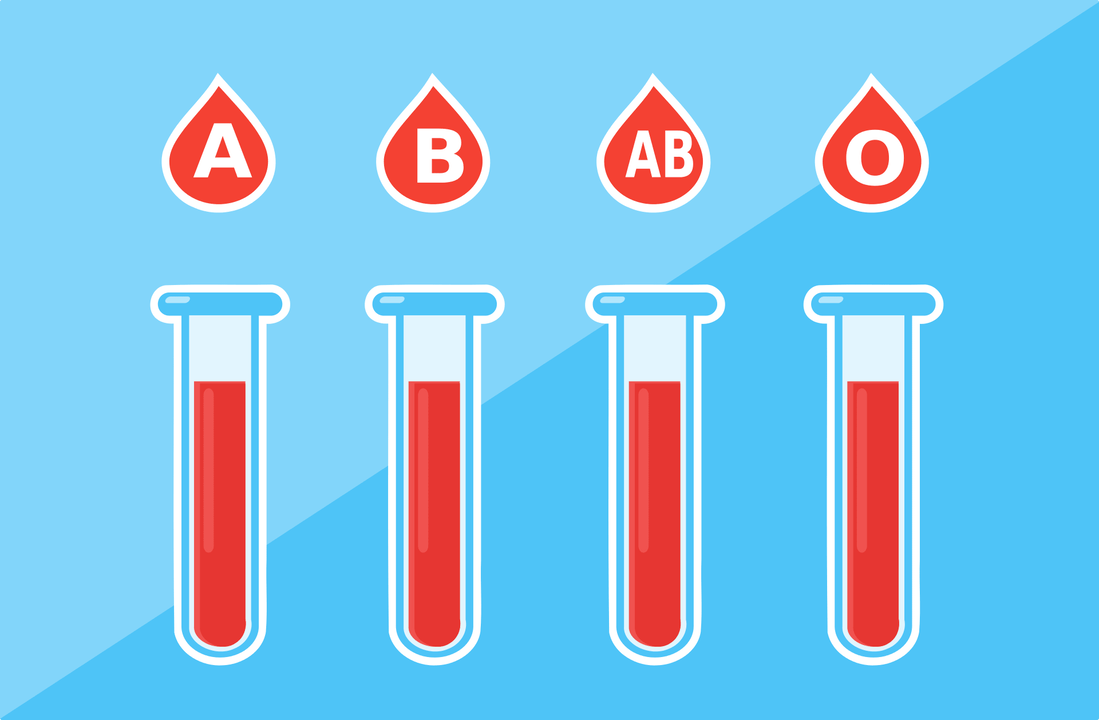
- Products that should be restricted are indicated by a "-";
- Allow - "+";
- Neutral - "0".
| product name | group | Blood | ||
|---|---|---|---|---|
| I | two | three, | No. 4 | |
Grain and flour products |
||||
| bagel | — | — | — | 0 |
| Rice cakes | 0 | + | + | + |
| Hot yeast products | — | — | 0 | 0 |
| Buckwheat | 0 | + | — | — |
| corn starch | — | 0 | — | — |
| Whole grains | — | — | 0 | 0 |
| pearl barley | 0 | 0 | — | 0 |
| Barley porridge | 0 | 0 | — | 0 |
| corn | — | 0 | — | — |
| spaghetti | — | — | 0 | 0 |
| wheat bran flour | 0 | + | — | — |
| Wheat flour (from durum wheat varieties) | — | — | 0 | 0 |
| Corn grits and flour | — | 0 | — | — |
| oatmeal | — | + | + | + |
| rye flour | 0 | + | — | + |
| oatmeal | — | — | — | 0 |
| Cookies "Cookies" | — | — | 0 | 0 |
| oatmeal cookies | — | 0 | + | 0 |
| Millet | 0 | 0 | + | + |
| Rye Gingerbread | 0 | — | 0 | 0 |
| wheat | — | — | — | 0 |
| rice | 0 | 0 | + | + |
| rye | 0 | + | — | 0 |
| grain bread | — | — | — | 0 |
| Whole wheat bread | — | — | — | 0 |
| spelled bread | 0 | 0 | 0 | 0 |
| Wheat Rye Bread | 0 | 0 | 0 | 0 |
| wheat bread | — | 0 | + | 0 |
| rye bread | 0 | 0 | — | + |
| rye bread | 0 | + | — | + |
| corn flake | — | 0 | — | — |
| cereals | — | 0 | + | + |
| oatmeal | — | — | — | 0 |
| barley | 0 | 0 | — | 0 |
Juices and drinks |
||||
| apricot | 0 | + | 0 | 0 |
| cherry plum | + | + | 0 | 0 |
| Pineapple | + | + | + | 0 |
| orange | — | — | 0 | — |
| birch | 0 | 0 | 0 | 0 |
| Grape | 0 | 0 | + | + |
| cherry | + | + | 0 | + |
| Pomegranate | 0 | 0 | — | — |
| Grapefruit | 0 | + | 0 | 0 |
| cabbage | — | 0 | + | + |
| cranberry | 0 | 0 | + | + |
| citric acid | 0 | + | 0 | 0 |
| carrot | 0 | + | 0 | 0 |
| cucumber | 0 | 0 | 0 | 0 |
| celery | 0 | + | 0 | + |
| Plum | + | + | 0 | 0 |
| tomato | 0 | — | — | 0 |
| cider | — | 0 | 0 | 0 |
| apple | — | 0 | 0 | 0 |
Decoctions and herbal teas |
||||
| hawthorn | 0 | + | 0 | + |
| Valerian | 0 | + | 0 | 0 |
| ginseng | 0 | + | + | + |
| St. John's Wort | — | + | 0 | 0 |
| strawberry leaves | — | 0 | 0 | + |
| linden | + | 0 | — | — |
| Burdock | — | + | 0 | + |
| blueberry | 0 | 0 | + | 0 |
| coltsfoot | — | 0 | — | — |
| Mint | 0 | 0 | 0 | 0 |
| dandelion | + | 0 | 0 | 0 |
| coriander | + | 0 | + | 0 |
| Chamomile | 0 | + | 0 | + |
| Licorice | 0 | 0 | + | + |
| Yarrow | 0 | 0 | 0 | 0 |
| thyme | 0 | 0 | 0 | 0 |
| Echinacea | 0 | + | 0 | + |
| rosehip berries | + | + | + | + |
dairy |
||||
| whole milk | — | — | 0 | — |
| yogurt | — | 0 | + | + |
| food grade casein | — | — | 0 | 0 |
| Kefir | — | 0 | + | + |
| goat milk | — | 0 | + | + |
| Skim milk | — | — | + | 0 |
| whey | — | — | 0 | 0 |
| ice cream | — | — | — | — |
| cream | — | — | 0 | — |
| sour cream | — | 0 | + | + |
| milk cheese | — | — | 0 | 0 |
| sheep cheese | 0 | 0 | + | + |
| processed cheese | — | 0 | 0 | — |
| curd | 0 | 0 | + | + |
| Homemade cheese | 0 | 0 | + | + |
oils and fats |
||||
| cod liver oil | 0 | 0 | 0 | 0 |
| margarine | 0 | 0 | — | — |
| peanut butter | — | — | — | 0 |
| coconut oil | — | — | — | — |
| Corn oil | — | — | — | — |
| Linseed oil | + | + | 0 | 0 |
| olive oil | + | + | + | + |
| Sunflower seed oil | 0 | 0 | — | — |
| butter | 0 | — | 0 | — |
| soybean oil | 0 | 0 | — | 0 |
| cottonseed oil | — | — | — | — |
Nuts and seeds |
||||
| peanut | — | + | — | + |
| Walnut | + | 0 | 0 | + |
| pine nuts | 0 | 0 | — | 0 |
| almond | 0 | 0 | 0 | 0 |
| hazelnut | 0 | 0 | — | — |
| poppy seeds | — | 0 | + | + |
| sunflower seeds | 0 | 0 | — | — |
| pumpkin seeds | + | + | — | — |
| pistachio | — | — | — | 0 |
vegetables and mushrooms |
||||
| sweet potato | + | — | + | + |
| Swede | 0 | 0 | + | 0 |
| Oyster mushroom | 0 | + | 0 | 0 |
| radish | 0 | 0 | 0 | 0 |
| zucchini, zucchini | 0 | 0 | 0 | 0 |
| Chinese cabbage | — | — | + | 0 |
| broccoli | + | + | + | + |
| Brussels sprouts | — | 0 | + | 0 |
| Chinese cabbage | — | — | + | 0 |
| red cabbage | — | — | + | 0 |
| cabbage | + | + | + | + |
| cauliflower | — | — | + | + |
| Potato | — | — | — | 0 |
| kohlrabi | + | + | 0 | 0 |
| Watercress | + | + | + | + |
| onion | 0 | + | 0 | 0 |
| Leek | + | + | 0 | 0 |
| onion | + | + | 0 | 0 |
| carrot | 0 | + | + | 0 |
| cucumber | 0 | 0 | 0 | + |
| Parsnips | + | + | 0 | + |
| chili | + | — | + | + |
| bell pepper | 0 | — | + | + |
| rhubarb | — | — | — | — |
| radish | 0 | 0 | — | — |
| radish | 0 | 0 | — | — |
| Radish (radish) | + | + | 0 | 0 |
| head lettuce | 0 | 0 | 0 | 0 |
| leaf lettuce | 0 | 0 | 0 | — |
| beet | 0 | 0 | 0 | 0 |
| Beetroot | + | + | + | + |
| celery | 0 | 0 | 0 | + |
| asparagus | 0 | 0 | 0 | 0 |
| tomato | 0 | — | — | 0 |
| Jerusalem artichoke | + | + | 0 | 0 |
| pumpkin | + | + | — | 0 |
| endive | + | + | 0 | 0 |
| mushroom | — | — | 0 | 0 |
| spinach | + | + | 0 | 0 |
beans |
||||
| soybeans | 0 | + | + | + |
| Beans "Navy" | — | — | + | + |
| black beans | 0 | + | — | — |
| Haricot vert | 0 | 0 | 0 | 0 |
| Haricot vert | 0 | 0 | 0 | 0 |
| soy milk | + | + | 0 | 0 |
| soy cheese | + | + | 0 | 0 |
| white beans | 0 | 0 | 0 | 0 |
| variegated beans | + | + | — | + |
| Lentils | — | + | — | + |
herbs and spices |
||||
| vanilla | — | 0 | 0 | 0 |
| carnation | 0 | 0 | 0 | 0 |
| mustard | 0 | + | 0 | 0 |
| jams and jellies | 0 | 0 | 0 | 0 |
| ketchup | — | — | — | — |
| coriander | 0 | 0 | 0 | 0 |
| Cinnamon | — | 0 | — | 0 |
| bay leaf | 0 | 0 | 0 | 0 |
| mayonnaise | 0 | — | — | 0 |
| Honey | 0 | 0 | 0 | 0 |
| nutmeg | — | 0 | 0 | 0 |
| chili | 0 | 0 | 0 | 0 |
| Pepper curry | + | 0 | + | + |
| Black pepper | — | — | 0 | — |
| coriander | + | 0 | + | + |
| sugar | 0 | 0 | 0 | 0 |
| Pickles and Marinades | — | 0 | 0 | — |
| caraway | 0 | 0 | 0 | 0 |
| Dill | 0 | 0 | 0 | 0 |
| white vinegar | — | — | 0 | — |
| wine vinegar | — | — | 0 | — |
| apple cider vinegar | — | — | 0 | — |
| fennel | 0 | 0 | 0 | 0 |
| horseradish | 0 | 0 | + | + |
| chocolate | 0 | 0 | 0 | 0 |
fruits and berries |
||||
| avocado | — | 0 | — | — |
| cherry plum | + | + | + | + |
| a pineapple | 0 | + | + | + |
| orange | — | — | 0 | — |
| watermelon | 0 | 0 | 0 | 0 |
| banana | 0 | — | + | — |
| Barberry | 0 | — | — | — |
| bilberry | 0 | + | + | + |
| Grape | 0 | 0 | + | + |
| cherry | 0 | + | 0 | + |
| blueberry | 0 | + | 0 | 0 |
| Pomegranate | 0 | 0 | — | — |
| Grapefruit | 0 | + | 0 | + |
| pear | 0 | 0 | 0 | 0 |
| melon | — | — | 0 | 0 |
| blackberries | — | + | 0 | 0 |
| raisin | 0 | 0 | 0 | 0 |
| Fig | + | + | 0 | + |
| kiwi | 0 | 0 | 0 | + |
| strawberry | — | 0 | 0 | 0 |
| cranberry | 0 | + | + | + |
| gooseberry | 0 | 0 | 0 | + |
| lemon | 0 | + | 0 | + |
| blueberry | 0 | 0 | 0 | 0 |
| mandarin | — | — | 0 | 0 |
| green olives | — | — | — | 0 |
| black olives | — | — | — | 0 |
| nectarine | 0 | 0 | 0 | 0 |
| coconut nuts | — | — | + | + |
| Peach | 0 | 0 | 0 | 0 |
| Plum | + | + | + | + |
| black currant | 0 | 0 | 0 | 0 |
| persimmon | 0 | 0 | — | — |
| cherry | + | + | 0 | + |
| blueberry | 0 | + | 0 | 0 |
| prunes | + | + | 0 | 0 |
| apple | + | + | + | + |
seafood |
||||
| carp | 0 | + | 0 | 0 |
| smelting | 0 | 0 | 0 | 0 |
| catfish | — | — | 0 | 0 |
| caviar | — | — | — | + |
| squid | 0 | — | 0 | — |
| flounder | 0 | — | + | — |
| Salmonidae | + | + | + | + |
| smoked salmon | — | — | — | — |
| mackerel | + | + | + | + |
| seaweed | + | 0 | — | 0 |
| sea bass | 0 | 0 | + | + |
| Perch | 0 | 0 | 0 | 0 |
| sturgeon | + | 0 | + | + |
| halibut | + | — | + | — |
| Crustaceans | 0 | — | — | — |
| pickled herring | — | — | + | — |
| fresh herring | + | + | 0 | 0 |
| salted herring | — | — | 0 | — |
| whitefish | + | + | + | + |
| river pike | + | 0 | + | + |
| som | — | — | 0 | 0 |
| zander | 0 | + | + | + |
| cod | + | + | + | + |
| tuna | 0 | 0 | 0 | + |
| acne | 0 | — | — | — |
| mackerel | + | + | + | + |
| trout | + | + | + | + |
| hake | + | — | + | — |
Meat products, poultry, eggs |
||||
| Ham | — | — | — | — |
| beef | + | — | 0 | — |
| Ground beef | + | — | 0 | — |
| veal | + | — | 0 | — |
| bacon | — | — | — | — |
| mutton | + | — | + | + |
| rabbit | 0 | — | + | + |
| Goose | — | — | — | — |
| Duck | 0 | — | — | — |
| turkey meat | + | 0 | 0 | + |
| broiler chicken | 0 | 0 | — | — |
| Egg | 0 | 0 | + | 0 |
| chicken | 0 | 0 | — | — |
| Ham | — | — | — | — |
| Heart | + | — | — | — |
| liver | + | — | 0 | 0 |
| salou | — | — | 0 | 0 |
| pork | — | — | — | — |
Other drinks |
||||
| Liquor | 0 | 0 | 0 | 0 |
| red wine | 0 | + | 0 | 0 |
| drinking water | + | + | + | 0 |
| vodka | — | — | — | — |
| Coca Cola | — | — | — | — |
| cognac | — | — | — | — |
| coffee black | — | + | 0 | + |
| lemonade | — | — | — | — |
| alcohol tincture | — | — | — | — |
| beer | 0 | — | 0 | 0 |
| Soda drinks | + | — | — | 0 |
| green tea | 0 | + | + | + |
| black tea | — | — | 0 | — |
Diet according to blood type 1
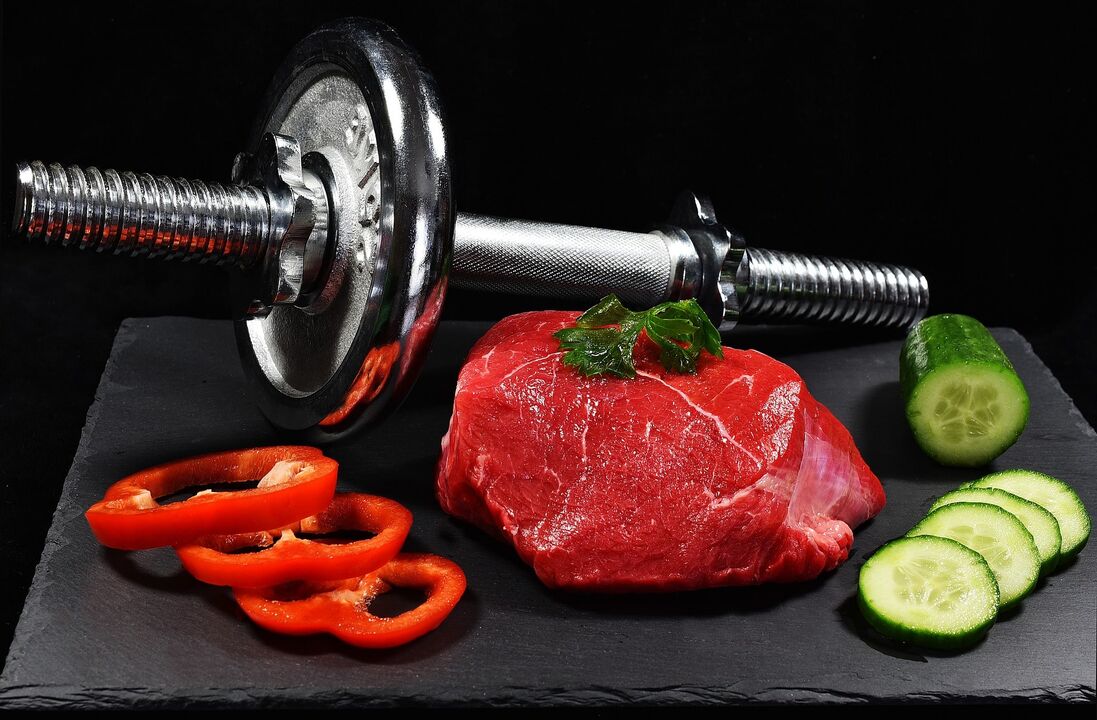
People with the first blood type are universal blood donors, which means that this blood type is absolutely suitable for everyone. By the way, mosquitoes prefer the first blood type to all other blood types.
Eating behavior characteristics (hunters, carnivores)
Therefore, the owners of the first group carry the genes of the oldest hunters, and their bodies need as much protein as possible at the genetic level. Unfortunately, the diet was the worst. If you decide on such a diet, then you will have to give up a lot of your favorite foods.
Allowed and prohibited products
| what can you eat | What are the restrictions? | neutral product | |
|---|---|---|---|
| Meat | Beef, veal, lamb, turkey, offal (liver, heart), ground beef. | Ham, ham, bacon, pork, lard, goose. | Rabbit, duck, broiler, chicken, eggs. |
| fish and seafood | Halibut, sturgeon, seaweed, fresh herring, pike, cod, mackerel, trout, hake. | Salted herring, catfish, caviar, smoked salmon, catfish. | Carp, smelt, flounder, squid, seabass, zander, tuna, eels, crustaceans. |
| Oil | Olives and flax seeds. | Peanuts, corn, cottonseed, soybeans. | Cod liver oil, margarine, soy, sunflower and butter. |
| Nuts and seeds | Walnuts, pumpkin seeds. | Peanuts, poppy seeds, pistachios. | Almonds, hazelnuts, pine nuts, sunflower seeds. |
| dairy | — | Almost all dairy products. | Feta and cheese, cottage cheese. |
| vegetables and fruits | Broccoli, kale, kohlrabi, watercress, leeks, onions, parsnips, peppers, turnips, Jerusalem artichokes, squash, chicory, spinach, cherry plums, figs, plums, cherries, prunes, apples. | White cabbage, Brussels sprouts, Chinese cabbage, red cabbage, cauliflower, potatoes, rhubarb, mushrooms, lentils, avocados, oranges, melons, blackberries, tangerines, olives. | Zucchini, green onions, carrots, cucumbers, bell peppers, radish, radish, lettuce, leaf lettuce, beet, celery, asparagus, tomatoes, black beans, green beans, green beans, white beans, pineapple, watermelon, banana, lingonberry, grape, cherry, Blueberries, pomegranates, grapefruits, pears, raisins, kiwis, cranberries, currants, lemons, raspberries, nectarines, peaches, currants, persimmons, blueberries. |
One day menu example
- breakfast– Grilled veal steak, fresh vegetable salad.
- snack– Apples or any other permitted seasonal fruit.
- dinner– Grilled trout, green tea.
- Afternoon tea snacks– A handful of walnuts.
- dinner– Seaweed Seafood Cocktail.
Diet according to blood type 2
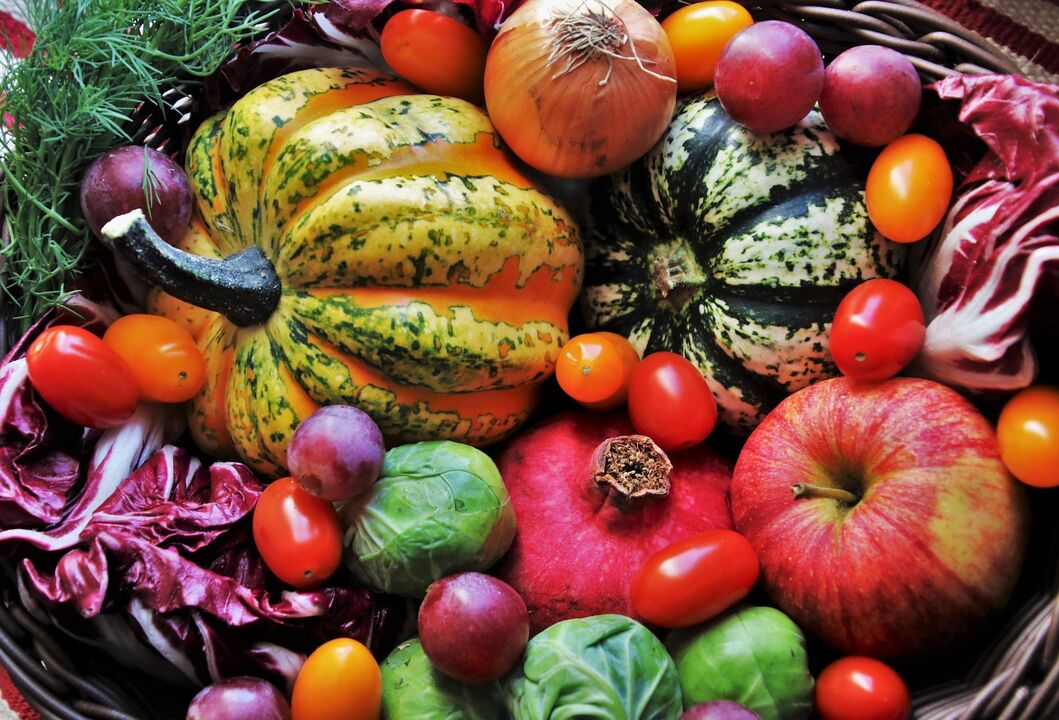
People with type O blood produce more of the hormone cortisol, which helps cope with stress. Also, unfortunately, they are prone to alcoholism.
Eating behavior characteristics (farmers)
Sometimes, the second blood type is called "vegetarian. "The region with the most users is Europe.
Allowed and prohibited products
| what can you eat | What are the restrictions? | neutral product | |
|---|---|---|---|
| Meat | — | Beef, veal, lamb, offal (liver, heart), ground beef, ham, bacon, ham, goose and duck, pork, rabbit, lard. | Eggs, broiler, chicken, turkey. |
| fish and seafood | Salmon species, carp, mackerel, fresh herring, cod, mackerel, trout. | Squid, catfish, caviar, halibut, flounder, smoked salmon, catfish, crustaceans, salted herring. | Smelt, seaweed, barracuda, tuna, seabass, sturgeon. |
| Oil | Olives and flax seeds. | Peanuts, coconuts, corn, cotton, butter. | Cod liver oil, margarine, soy and sunflower. |
| Nuts and seeds | Peanuts, pumpkin seeds. | pistachio. | Almonds, hazelnuts, poppy seeds, sunflower seeds, pine and walnuts. |
| dairy | — | Milk, ice cream, cream, whey, cow's milk cheese. | Yogurt, kefir, goat's milk, sour cream, sheep's cheese and cottage cheese. |
| vegetables and fruits | Broccoli, kale, kohlrabi, watercress, scallions, leeks, onions, carrots, parsnips, radishes, pumpkin, endive, spinach, black beans, variegated beans, lentils, cherry plums, pineapple, huckleberries, cherries, blueberries, grapefruit, blackberries, figs, cranberries, lemons, plums, cherries, blueberries, plums, apples. | Tomatoes, cabbage and cauliflower, mushrooms, olives, hot and bell peppers, potatoes, rhubarb, tangerines, bananas, oranges. | Paprika, nutmeg, coriander, cloves, radish, beet, cucumber, zucchini, fennel, Brussels sprouts, radish, lettuce, celery. |
One day menu example
- breakfast– Buckwheat porridge, Korean carrots, green tea.
- snack– Any permitted fruit or vegetable.
- dinner– Boiled chicken breast with green beans as a side dish.
- Afternoon tea snacks- carrot juice.
- dinner– Fruit salad with cheese.
Diet according to blood type 3

Characteristics of eating behavior (nomads)
The largest number of people with the third blood type live in Asia - they are genetic nomads.
Allowed and prohibited products
| what can you eat | What are the restrictions? | neutral product | |
|---|---|---|---|
| Meat | Lamb, rabbit, eggs. | Ham, bacon, pork, duck, goose and chicken, chicken. | Beef and ground beef, turkey, lard. |
| fish and seafood | Almost all kinds of fish. | Smoked salmon, caviar, seaweed, eel, crustaceans. | Carp, smelt, bass, herring, tuna, catfish. |
| Oil | olives. | Margarine, peanuts, coconut, corn, cottonseed, soybeans, sunflower. | Butter and flaxseed, cod liver oil. |
| Nuts and seeds | poppy. | Peanuts, pine nuts, hazelnuts, pumpkin and sunflower seeds. | Walnuts, almonds. |
| dairy | Yogurt, kefir, goat's milk, sour cream, sheep's cheese, cottage cheese. | ice cream. | Whole milk, cheese, whey, cream. |
| vegetables and fruits | Cauliflower, white and red cabbage, carrots, broccoli, hot and bell peppers, beets, watercress, pineapple, lingonberries, bananas, grapes, apples, cranberries, plums. | Corn, lentils, beans, potatoes, rhubarb, turnips, turnips, tomatoes, pomegranates, avocados, pumpkins, barberries, olives, persimmons. | Melon, spinach, watermelon, grapefruit, cherry, fig, blueberry, raisin, pear, blackberry, blueberry, lemon, kiwi, strawberry, gooseberry, plum, raspberry, nectarine, gooseberry, peach, sweet cherry, dill, kohlrabi, onions, zucchini, asparagus, parsnips, turnips, beets, celery, Jerusalem artichokes. |
One day menu example
- breakfast– Boiled eggs, cheese, herbal tea.
- snack– Fruits in season.
- dinner– Cream of mushroom soup, stewed rabbit.
- Afternoon tea snacks– Natural yogurt with banana slices.
- dinner– Boiled veal with green beans.
Diet according to blood type 4

People with type IV blood are more likely to develop Alzheimer's disease and Alzheimer's disease. But they are also popular donors of plasma, which is extremely valuable in treating burns.
Peculiarities of Eating Behavior (Puzzle)
Allowed and prohibited products
| what can you eat | What are the restrictions? | neutral product | |
|---|---|---|---|
| Meat | Lamb, rabbit, turkey. | Beef and ground beef, ham, bacon, poultry, pork. | Eggs, liver, lard. |
| fish and seafood | Salmon, caviar, mackerel, seabass, sturgeon, pike, zander, cod, tuna, trout, mackerel. | Squid, halibut, smoked salmon, halibut, salted herring, eel, cod. | Seaweed, carp, smelt, seabass, catfish, fresh herring. |
| Oil | olives. | Margarine, butter, coconut, corn, cottonseed, sunflower. | Peanuts, soybeans, flaxseed, cod liver oil. |
| Nuts and seeds | Peanuts, poppy seeds, walnuts. | Pumpkin seeds, sunflower seeds, hazelnuts. | Almonds, pistachios, pine nuts. |
| dairy | Yogurt, kefir, goat's milk, sheep's cheese, cottage cheese, sour cream. | Ice cream, cream, whole milk. | Whey, cheese, skim milk, |
| vegetables and fruits | Cabbage, beets, potatoes, figs, celery, kiwi, cherries, pineapple. | Black olives, green peppers, corn, bananas, coconuts, pomegranates. | Carrots, kohlrabi, horseradish, Chinese cabbage, apples, apricots, watermelon. |
One day menu example
- breakfast– Whole wheat bread, tofu (tofu), radish salad.
- snack- Vegetables or cheese.
- dinner– Grilled fish with mashed potatoes and carrot salad.
- Afternoon tea snacks- yogurt.
- dinner– Omelet, lettuce, whole wheat bread.
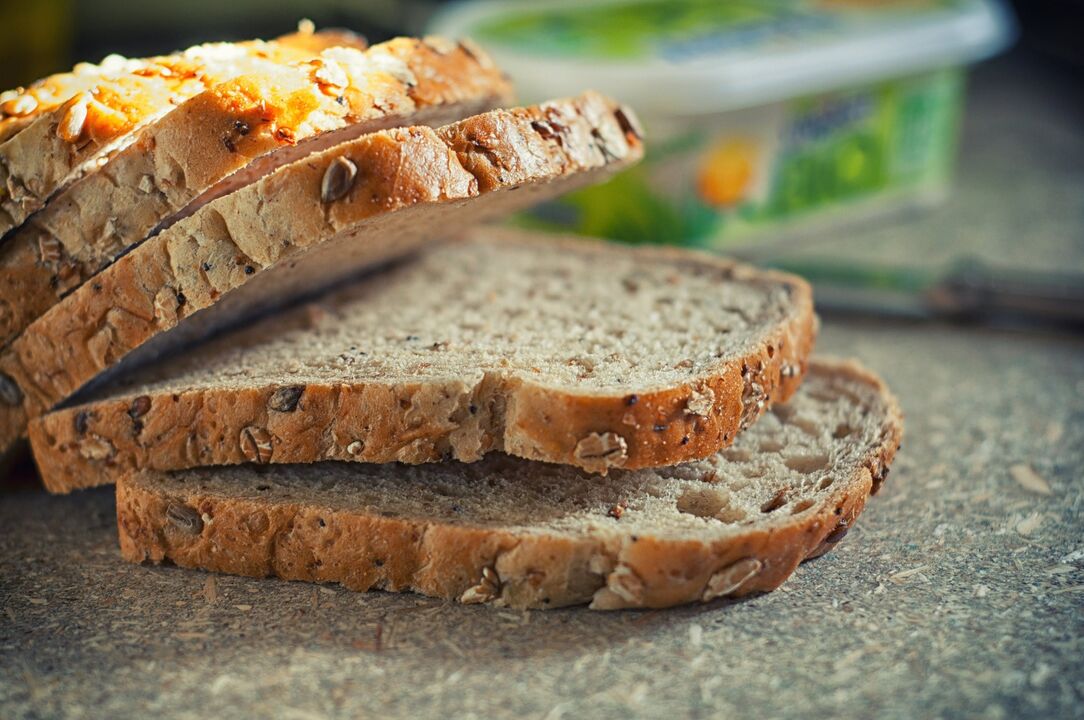
Does Rh factor affect nutrition?
The influence of the Rh factor is not mentioned at all in D'Adamo's masterpiece. Since more than 80% of the world's population has a positive Rh factor, the diet is designed specifically for these people.
dietary taboos
- diabetes;
- chronic digestive problems;
- Hematopoietic dysfunction;
- ARVI.
Do not experiment on yourself under any circumstances while pregnant or breastfeeding; remember, you are not only responsible for your own life, but also for your baby's.
Reviews from dieters
- "This is an ideal diet for people with no health problems. However, if you are overweight, then you are predisposed to various diseases, so the diet will not work. Of course, it is convenient to have a wide choice of products, But this approach does not suit me - doctors prohibit the consumption of all products allowed on the table. It turns out that the table is almost 90% contrary to the advice of doctors. "
- "I have no medical education, but I clearly see the huge drawbacks - the diet is completely unscientific. One of them is that people in the second category should rely on vegetarian food, and people in the third and fourth categories are omnivores, but theyPrecisely the descendants of the second category. Generally speaking, I wouldn't even try. "
- "I lost 10kg in a few months! The Blood Type Diet is cool and easy to lose weight. I think you can maintain this diet for life. I recommend this wonderful diet to anyone who wants to lose weight! "
- "The blood type diet is complete nonsense. Don't torture yourself with these healthy, harmful, neutral products. Eat everything in moderation and don't go crazy. If you want something sweet, eat 1-2 sugar insteadWhole chocolate; if you want bread, cut it off and eat it, but don't starve yourself. "
- "I presented the approved second-blood product at work - and the whole team laughed, wiped away tears and ate schnitzel (yes, yes, half of our team are 'farmers'). To be honest, I'm fromI have never seen a more stupid and completely unacceptable eating habit! "
Doctors’ opinions and criticisms
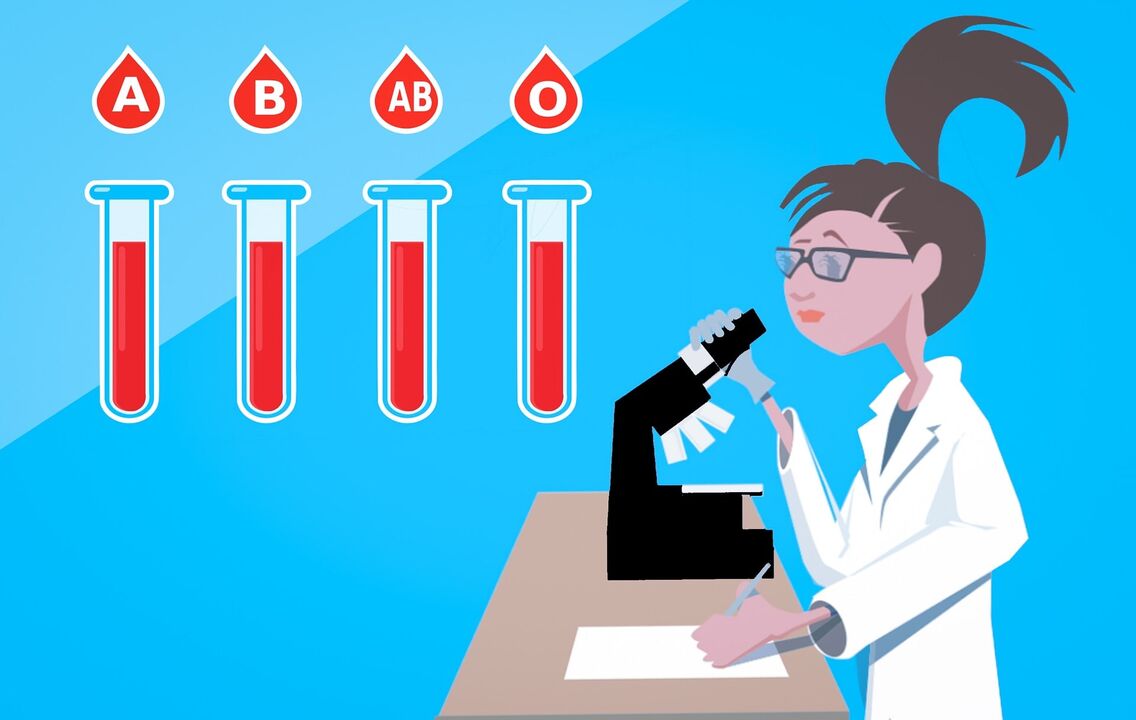
Advantages and Disadvantages of Diet
- A large number of permitted products;
- Easy to carry;
- Ability to create diverse and balanced menus;
- You can stick with it for a long time.
- There is no clear plan for how, when and in what quantities certain products will be consumed;
- There is no scientific basis for diet, and all conclusions are too general;
- It's another lucrative business for nutritionists and, of course, the creators themselves.















































































